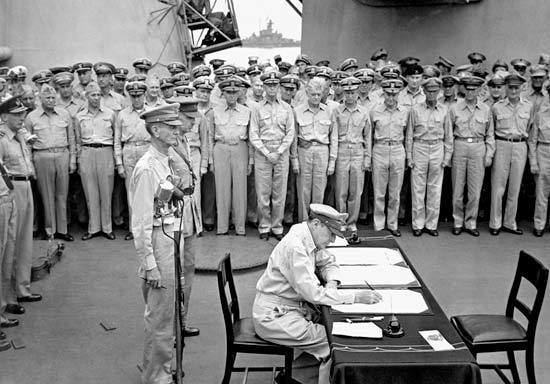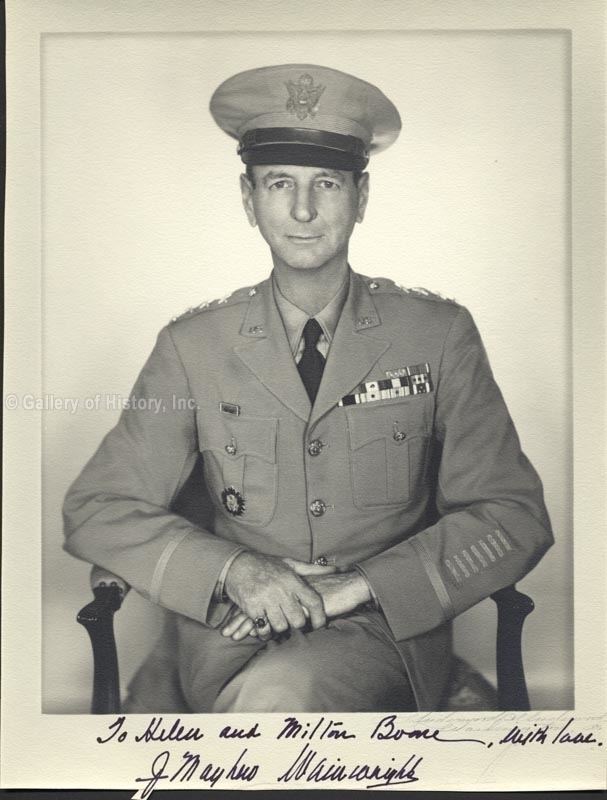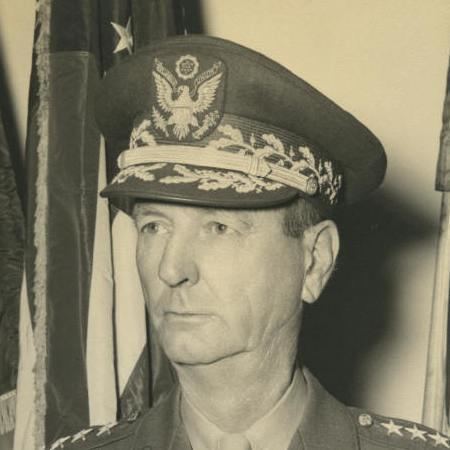Nickname(s) "Skinny", "Jim" Years of service 1906–47 Name Jonathan Wainwright | Service/branch United States Army Rank General Role General | |
 | ||
Birth name Jonathan Mayhew Wainwright IV Born August 23, 1883Walla Walla, Washington, U.S. ( 1883-08-23 ) Allegiance United States of America Education United States Military Academy Books General Wainwright's story, Wainwright: Those Who Came Before Us: Wainwrights, Mayhews, Stuyvesants and Others Similar People Masaharu Homma, Edward P King, Douglas MacArthur, Vicente Lim, Manuel L Quezon | ||
Jonathan Mayhew "Skinny" Wainwright IV (August 23, 1883 – September 2, 1953) was a career American army officer and the commander of Allied forces in the Philippines at the time of their surrender to the Empire of Japan during World War II. Wainwright was a recipient of the Medal of Honor for his courageous leadership during the fall of the Philippines.
Contents
- Early life and training
- World War I
- Inter war period
- World War II
- Medal of Honor citation
- Post war years and retirement
- Awards
- Honors
- Film
- Works
- References

Early life and training

Wainwright was born at Fort Walla Walla, an army post now in Walla Walla, Washington, and was the son of Robert Powell Page Wainwright, a U.S. Army officer who was commissioned a 2nd lieutenant in the US 1st Cavalry in 1875, commanded a squadron at the Battle of Santiago de Cuba during the Spanish–American War, and in 1902 was killed in action in the Philippines. His grandfather was Lieutenant Jonathan Mayhew Wainwright II, USN, who was killed in action during the Civil War.

He graduated from Highland Park High School in 1901 and from West Point, in 1906. He served as First Captain of the Corps of Cadets. Wainwright was commissioned in the cavalry. He served with the U.S. 1st Cavalry Regiment in Texas from 1906 to 1908 and in the Philippines from 1908 to 1910, where he saw combat on Jolo, during the Moro Rebellion. Wainwright graduated from the Mounted Service School, Fort Riley, Kansas, in 1916 and was promoted to captain. By 1917, he was on the staff of the first officer training camp at Plattsburgh, New York.
World War I

In February 1918, he was ordered to France, during World War I. In June, he became Assistant Chief-of-Staff of the U.S. 82nd Infantry Division, with which he took part in the Saint Mihiel and Meuse-Argonne Offensives. As a temporary lieutenant colonel, he was assigned to occupation duty in Germany with the 3rd Army at Koblenz, Germany, from October 1918 until 1920. Having reverted to the rank of captain, he was then promoted to major.
Inter-war period
After a year as an instructor at the Cavalry School at Fort Riley, he was attached to the General Staff from 1921 to 1923 and assigned to the U.S. 3rd Cavalry Regiment, Fort Myer, Virginia, from 1923 to 1925. In 1929, he was promoted to lieutenant colonel and graduated from the Command and General Staff School, Fort Leavenworth, Kansas, in 1931, and from the Army War College in 1934. Wainwright was promoted to colonel in 1935, and served as commander of the 3rd Cavalry Regiment until 1938, when he was promoted to brigadier general in command of the 1st Cavalry Brigade at Fort Clark, Texas.
World War II
In September 1940, Wainwright was promoted to major general (temporary) and returned to the Philippines, in December, as commander of the Philippine Department. As the senior field commander of Filipino and US forces—under General Douglas MacArthur—Wainwright was responsible for resisting the Japanese invasion of the Philippines, which began in December 1941. On 8 December 1941, he commanded the North Luzon Force, comprising three reserve Filipino divisions and the 26th Cavalry Regiment (Philippine Scouts). Retreating from the Japanese beachhead of Lingayen Gulf, Allied forces had withdrawn onto the Bataan Peninsula and Corregidor by January 1942, where they defended the entrance to Manila Bay.
Following the evacuation of MacArthur to Australia in March to serve as Allied Supreme Commander, South West Pacific Area, Wainwright inherited the unenviable position of Allied commander in the Philippines. Also that March, Wainwright was promoted to lieutenant general (temporary). On April 9, the 70,000 troops on Bataan surrendered under the command of Major General Edward P. King. On May 5, the Japanese attacked Corregidor and on May 6, in the interest of minimizing casualties, Wainwright surrendered. By June 9, Allied forces had completely surrendered.
Wainwright was then held in prison camps in northern Luzon, Formosa, and Liaoyuan (then called Xi'an and a county within Manchukuo) until his liberation by the Red Army in August 1945. He was the highest-ranking American POW, and despite his rank, his treatment at the hands of the Japanese was not pleasant. When he met General MacArthur in August 1945 shortly after his liberation, he had become thin and malnourished from three years of mistreatment during captivity. After witnessing the Japanese surrender aboard the USS Missouri (BB-63) on September 2, together with Lieutenant-General Arthur Percival, he returned to the Philippines to receive the surrender of the local Japanese commander, Lieutenant-General Tomoyuki Yamashita.
Dubbed by his men a "fighting" general who was willing to get down in the foxholes, Wainwright won the respect of all who were imprisoned with him. He agonized over his decision to surrender Corregidor throughout his captivity, feeling that he had let his country down. Upon release, the first question he asked was how people back in the U.S. thought of him, and he was amazed when told he was considered a hero. He later received the Medal of Honor, an honor which had first been proposed early in his captivity, in 1942, but was rejected due to the vehement opposition of General MacArthur, who felt that Corregidor should not have been surrendered. MacArthur did not oppose the renewed proposal in 1945.
Medal of Honor citation
Rank and Organization: General, Commanding U.S. Army Forces in the Philippines. Place and date: Philippine Islands, 12 March to 7 May 1942. Entered Service at: Skaneateles, N.Y. Birth: Walla Walla, Wash. G.O. No.: 80, 19 September 1945.
Citation:
Distinguished himself by intrepid and determined leadership against greatly superior enemy forces. At the repeated risk of life above and beyond the call of duty in his position, he frequented the firing line of his troops where his presence provided the example and incentive that helped make the gallant efforts of these men possible. The final stand on beleaguered Corregidor, for which he was in an important measure personally responsible, commanded the admiration of the Nation's allies. It reflected the high morale of American arms in the face of overwhelming odds. His courage and resolution were a vitally needed inspiration to the then sorely pressed freedom-loving peoples of the world.
Post-war years and retirement
On September 5, 1945, shortly after the Japanese surrender, Wainwright was promoted to four-star general. On September 13, a ticker-tape parade in New York City was held in his honor. Upon returning to the United States, he was assigned as commander of Second Service Command and the Eastern Defense Command at Fort Jay, Governors Island, New York. In January 1946, he became the commander of the Fourth Army at Fort Sam Houston, Texas, where he retired in August 1947.
He became a Freemason in May 1946 at Union Lodge No. 7. in Junction City Kansas and a Shriner soon after. Wainwright was also a Hereditary Companion of the Military Order of the Loyal Legion of the United States by right of his grandfather's service in the Union Navy during the Civil War.
Wainwright served on the board of directors for several corporations after his retirement. He made himself available to speak before veterans' groups and filled almost every request to do so. He never felt any bitterness toward MacArthur for his actions in the Philippines or MacArthur's attempt to deny him the Medal of Honor. In fact, when it appeared that MacArthur might be nominated for president at the 1948 Republican National Convention, Wainwright stood ready to make the nominating speech.
He died of a stroke in San Antonio, Texas on September 2, 1953. Wainwright was buried in Section 1 of Arlington National Cemetery with a Masonic service and is one of the few people to have had their funeral held in the lower level of the Memorial Amphitheater. He is buried next to his wife and near his parents.
Awards
General Wainwright was also posthumously eligible for the Prisoner of War Medal.
Honors
Film
In the film MacArthur (1977), Wainwright was portrayed by Sandy Kenyon.
